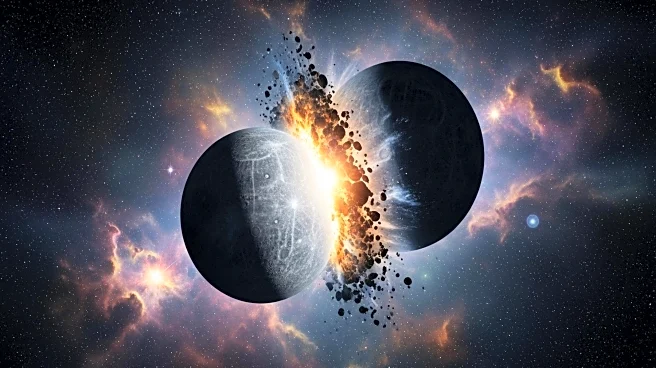What is the story about?
What's Happening?
A new study published in Nature Astronomy suggests that Mercury's formation may have resulted from a near-collision between two bodies of similar mass, rather than a catastrophic impact with a larger celestial body. The research, led by Patrick Franco, uses simulations to demonstrate that a grazing impact between protoplanets could account for Mercury's large metallic core and small rocky mantle. This scenario is statistically more plausible than previous theories, which involved rare collisions between bodies of vastly different masses.
Why It's Important?
Understanding Mercury's formation provides insights into planetary development in the early solar system. The study challenges existing models and suggests that similar mass collisions were more common, potentially influencing the formation of other rocky planets. This research could reshape theories about planetary differentiation and material loss, offering a new perspective on the dynamics of the solar system's evolution.
What's Next?
Future research will involve comparing the model's predictions with geochemical data from meteorites and space missions like BepiColombo. These comparisons could validate the new theory and enhance our understanding of Mercury's composition. Additionally, the study opens avenues for exploring the formation of other planets, potentially leading to broader applications in planetary science.
Beyond the Headlines
The study's implications extend to the broader field of astrophysics, where understanding planetary formation processes can inform models of solar system evolution. The research also highlights the importance of computational methods like smoothed particle hydrodynamics in simulating complex astrophysical phenomena.
AI Generated Content
Do you find this article useful?
















